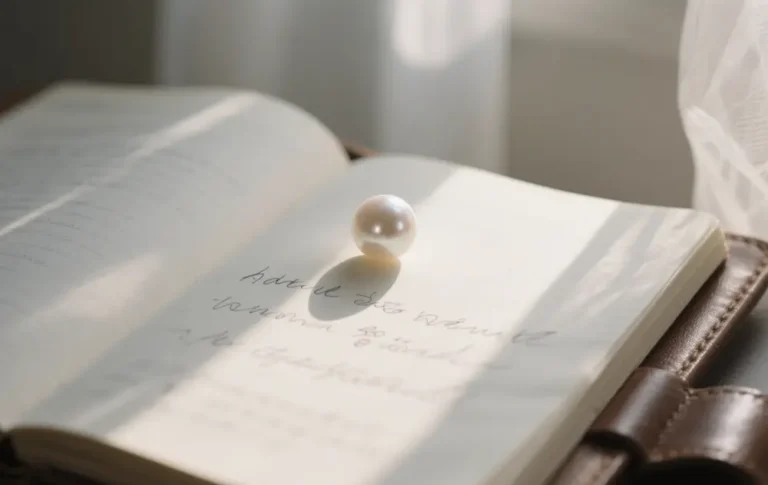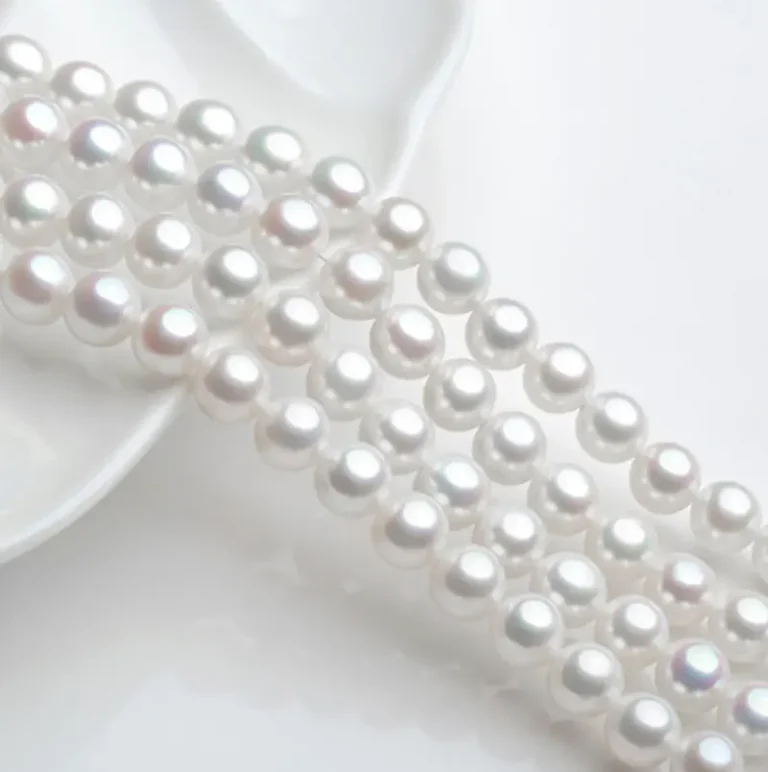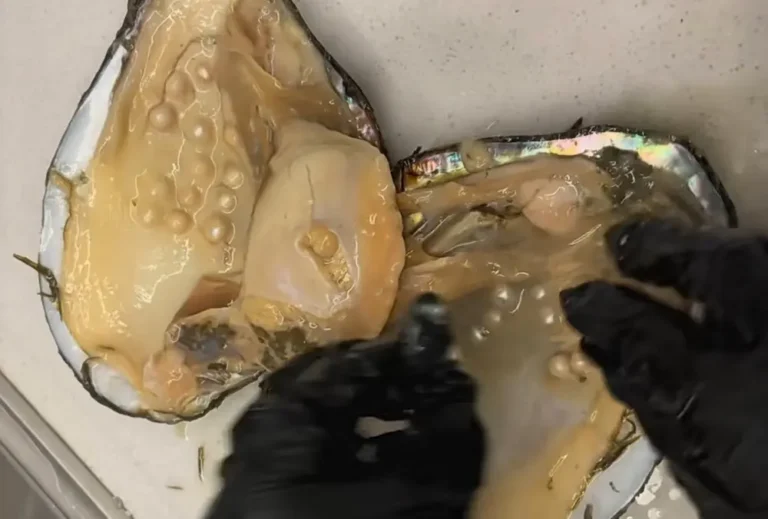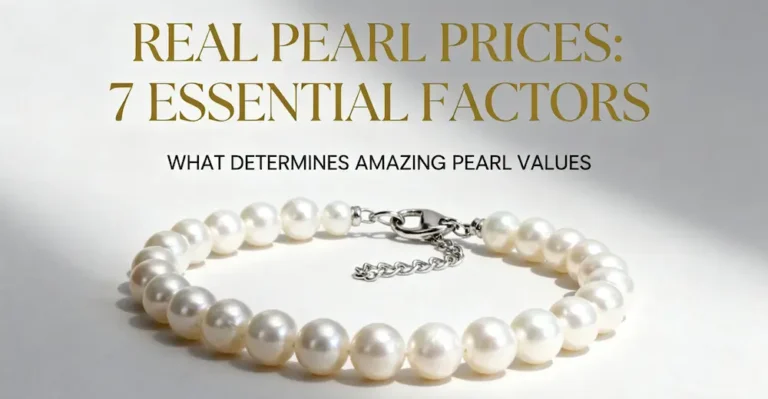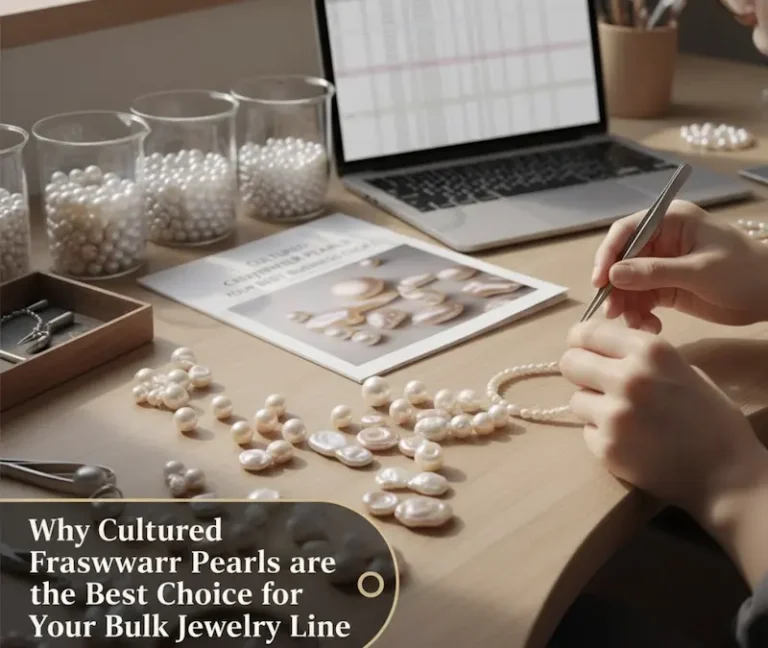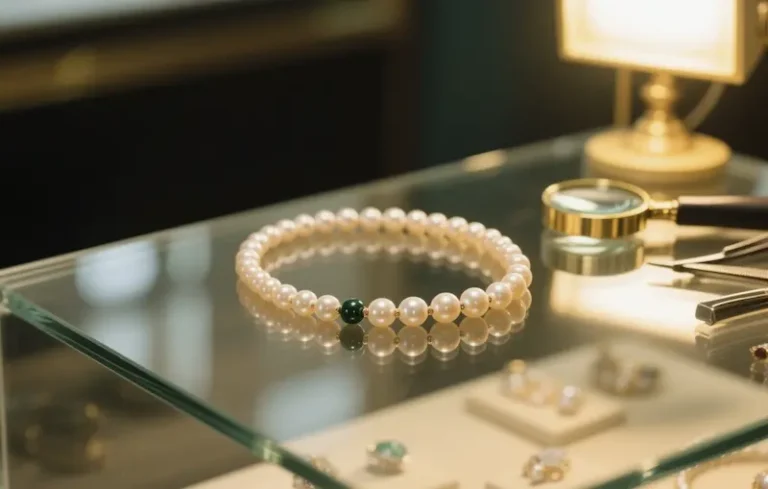People who love jewellery have been drawn to pearl necklaces for a long time. They are a prized addition to any collection because of their beautiful shine and classic style.
But you’re not the only one who has been confused about why one necklace costs so much more than another. You don’t have to have a hard time learning how to buy a pearl necklace. You just need to know what to look for.
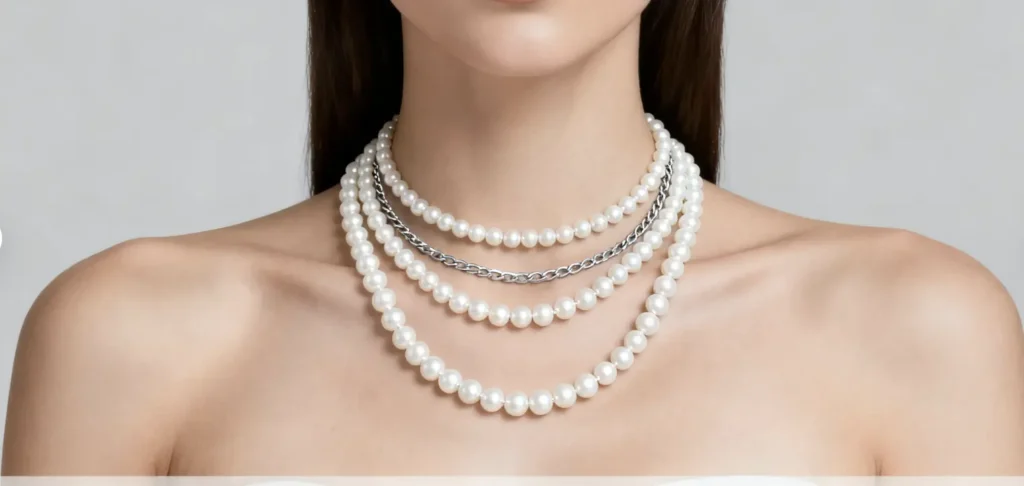
This guide will tell you everything you need to know, whether you’re buying your first piece of pearl jewellery or adding to your collection.
You’ll learn enough to easily pick out a piece you’ll love for years, from knowing what makes a pearl high-quality to choosing the right length and type.
Understanding Pearl Types: Your First Decision
It’s important to know the different types of pearls you can buy before you even think about their size or colour. This basic knowledge will help you understand how much you’ll need to spend and what kind of look you can expect to get, which is a crucial step in learning how to buy a pearl necklace.
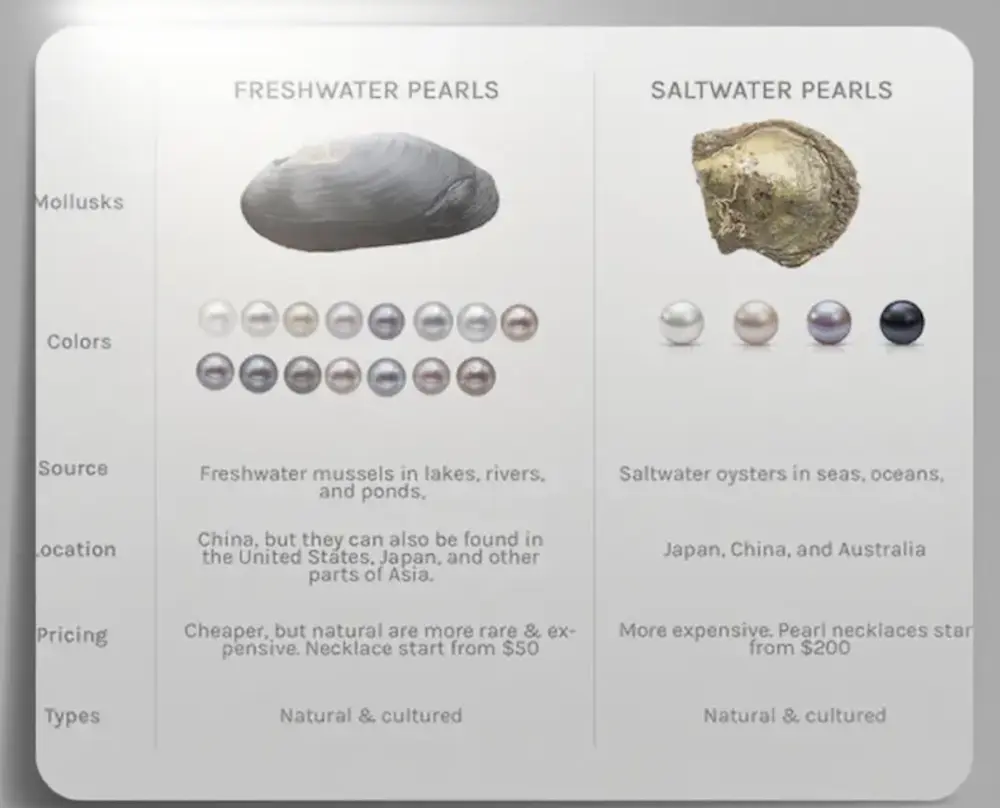
- Freshwater Pearls: Affordable Beauty: Affordable Beauty: Freshwater pearls are cultured in mussels living in ponds, rivers, and lakes. They are the most common type of pearl on the market, which makes them very easy to find. One fascinating fact? A single mussel can produce multiple pearls at once! These beauties come in amazing natural colors like white, pink, lavender, and even peach. While they might look a lot like saltwater pearls, freshwater pearls usually cost much less. If you’re just starting to explore pearl necklaces, freshwater pearls are a great option because you get a lot for your money.
- Akoya Pearls: Classic Perfection: When most people think of a classic pearl necklace, they’re picturing Akoya pearls. These saltwater pearls, mainly from Japan and China, are praised for their gorgeous shine and nearly perfect roundness. They typically range from 6mm to 9mm in size and come in white or creamy shades, often with subtle hints of rose or silver. They’re considered the epitome of classic pearl elegance, but they do cost more than freshwater pearls.
- South Sea and Tahitian Pearls: South Sea and Tahitian pearls are the best choice if you want something truly unique and beautiful. The biggest cultured pearls are South Sea pearls, which come from the waters around Australia, Indonesia, and the Philippines. They can be quite large, easily reaching 10mm to 15mm or even larger! And they come in lovely colors like white, silver, and gold. Tahitian pearls are mostly grown in French Polynesia, despite what their name implies. These pearls are famous for their deep, dark shades, including charcoal, peacock green, and eggplant.
The Seven Value Factors That Determine Quality
It’s very important to know what makes a pearl necklace good quality when you’re trying to buy one, a key consideration for how to buy a pearl necklace.
Unlike diamonds, which have standardized grading, pearl evaluation remains somewhat subjective. However, seven key factors consistently determine value.
Factor #1: Luster – The Most Critical Factor
Luster is all about how intense and sharp the light is when it bounces off a pearl. It’s what makes them look like they’re glowing from within! When you’re checking out a good pearl—a vital step in learning How to buy a pearl necklace—you should see a clear, sharp reflection in its surface, almost like a mirror. If the luster is bad, the pearl will look chalky and lifeless. Here’s a quick test: hold the pearls up near your face under some good light. If you can see a crisp reflection of your features, that’s excellent luster. This single factor often matters more than size when determining value.
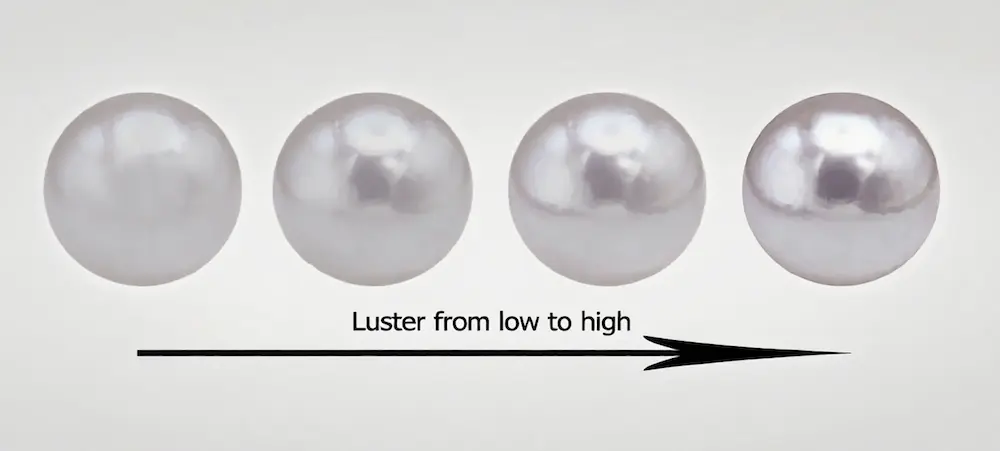
| Quality Grade | Luster Characteristics | What You’ll See |
|---|---|---|
| AAAAA/AAAA/AAA | Excellent to exceptional | Sharp, mirror-like reflections |
| AA | Very good | Good reflections with slight softness |
| A | Good | Softer reflections, some haze |
| B/C | Fair to poor | Chalky appearance, minimal reflection |
Factor #2: Surface Quality – Blemishes and Perfection
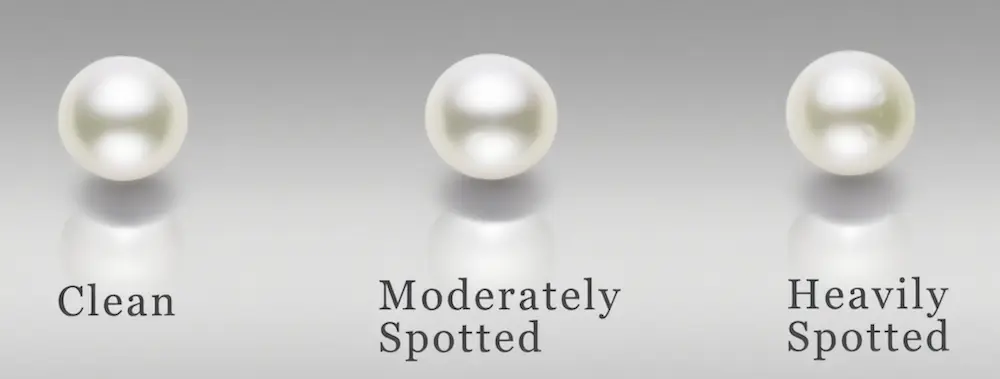
Natural pearls almost always have some flaws on the surface because they are made by living things!
But the value of these blemishes depends a lot on how many, how big, and how visible they are, which is important to remember for how to buy a pearl necklace.
Premium pearls have smooth surfaces with few spots, bumps, or other flaws. In good light, hold the strand about a foot away from your face to see how good the surface is. Can you easily spot imperfections? Are these flaws really noticeable, or do you have to squint and search to find them?
Factor #3: Shape – Round, Baroque, and Everything Between
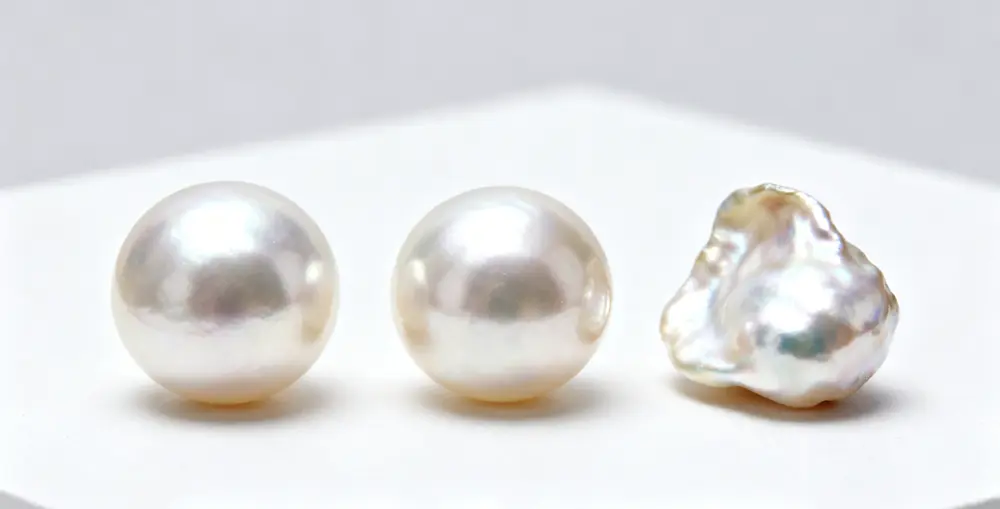
The most expensive pearls are those that are perfectly round. But beauty can be found in all kinds of shapes!
Near-round pearls offer excellent value while maintaining a classic appearance. Baroque pearls—those wonderfully irregular, organic shapes—have gained tremendous popularity in contemporary jewelry design.
Drop-shaped pearls work beautifully in pendants and earrings. When learning how to buy a pearl necklace, remember that shape preferences are personal. A slightly off-round strand can cost substantially less while looking virtually identical when worn.
Factor #4: Size – Bigger Isn’t Always Better
Pearl size is measured in millimeters. Generally speaking, larger pearls are rarer and more expensive when other factors remain equal.
However—and this is crucial when learning how to buy a pearl necklace—a smaller pearl with exceptional luster and surface quality will always look more beautiful than a larger pearl with poor characteristics.
Many Pearl Manufacturer experts recommend prioritizing quality over size. A bright and shiny 7-8mm strand will always look better than a dull 9-10mm one.

Here are some common pearl sizes:
- 6-7mm: Small and perfect for a young or delicate look.
- 7-8mm: A great size for everyday wear.
- 8-9mm: Classic and noticeable – they definitely get seen.
- 9-10mm and larger: Make a real statement of luxury.
Factor #5: Color – Personal Preference Meets Skin Tone
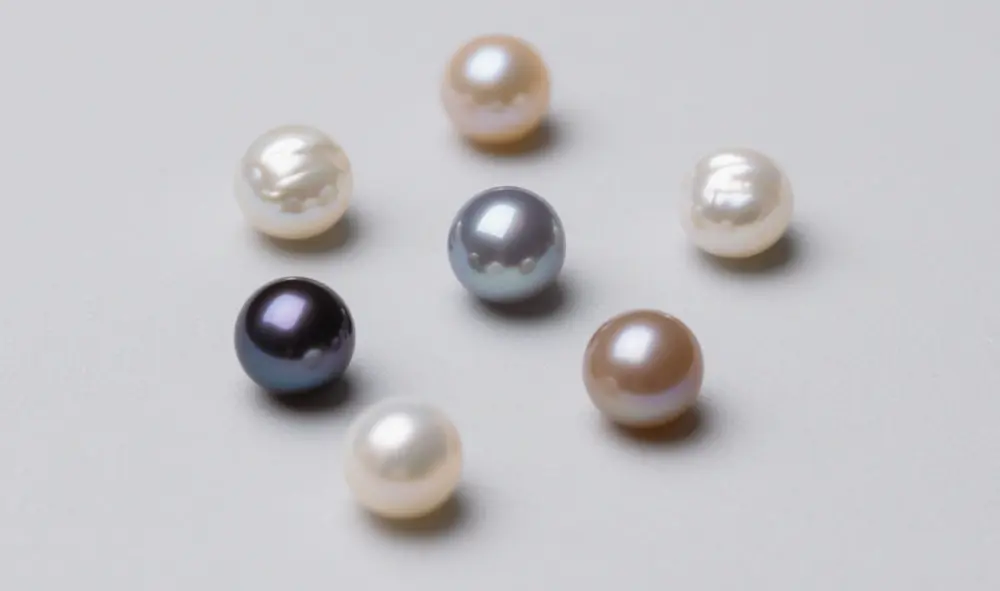
Pearl colors span an incredible range—white, cream, pink, lavender, golden, black, and everything in between. There’s no “best” color; it’s entirely about what complements your skin tone and personal style. Generally, cooler skin tones pair beautifully with white pearls that have rose or silver overtones, while warmer complexions glow alongside cream or golden pearls. When shopping for wholesale pearls, considering trying different colors near your face in natural lighting is a great tip for how to buy a pearl necklace.
Factor #6: Nacre Quality – The Heart of Durability
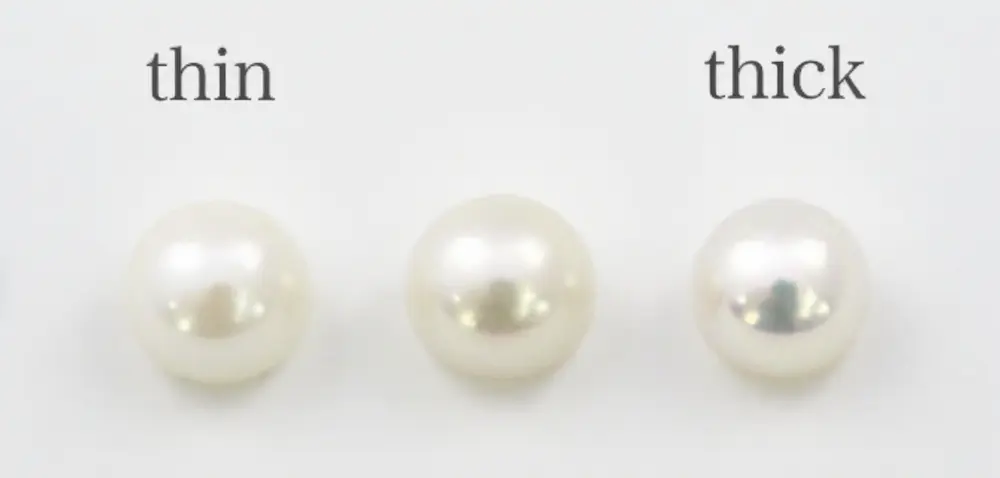
Nacre—the lustrous material that forms around the pearl’s nucleus—determines both beauty and longevity. Thick nacre means better luster and longer-lasting pearls. Thin nacre can lead to chipping, peeling, or loss of luster over time. According to the Gemological Institute of America, good nacre quality shows no evidence of the nucleus showing through and displays excellent luster. When examining Akoya or other bead-nucleated pearls—a crucial step for How to buy a pearl necklace—look carefully at the drill holes. Can you see the bead nucleus? If so, the nacre might be too thin.
Factor #7: Matching – Consistency Throughout the Strand
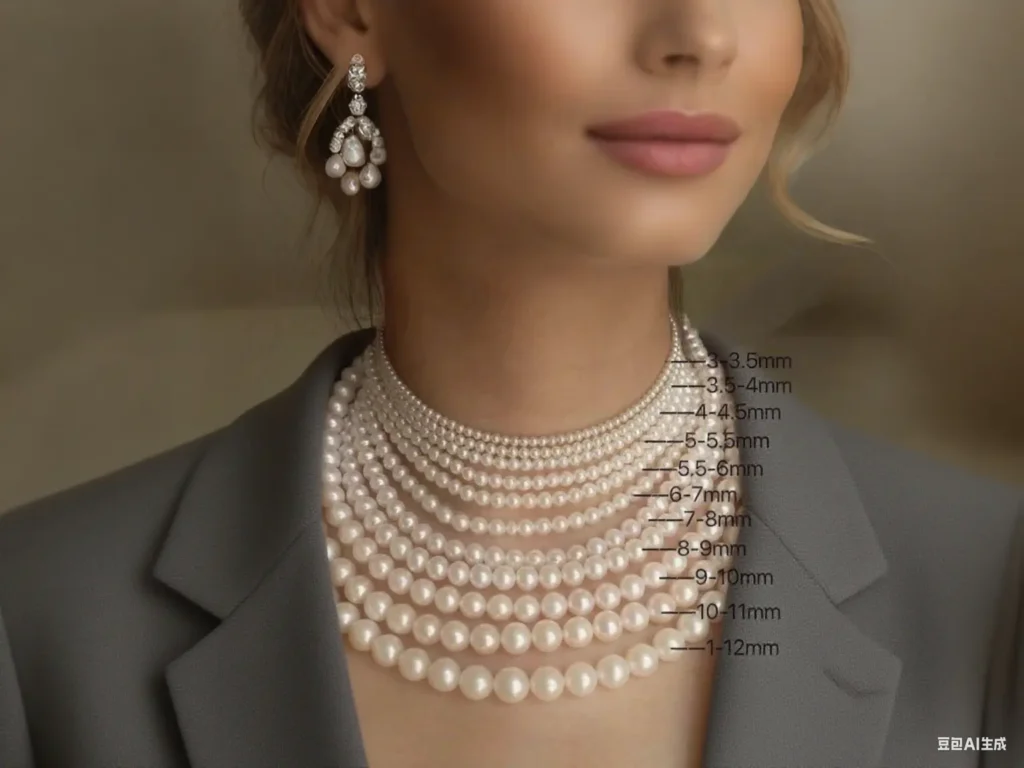
A good quality strand will have pearls that match each other in size, shape, color, and how they shine, from one end to the other. Getting this even look takes skill and time, which is why these strands cost more. Strands with perfectly matched pearls are the most expensive. But strands where the pearls get bigger towards the middle (called graduated strands) can also be pretty and are often cheaper—all important points for how to buy a pearl necklace.
Choosing the Right Length for Your Style
Necklace length dramatically impacts both appearance and versatility. When you’re thinking about how to buy a pearl necklace, think about your body type, wardrobe, and way of life.
Understanding pricing helps you shop confidently. Pearl necklaces range from under $100 to well over $100,000, depending on type, quality, and size.
Keep in mind you’re buying something that, with a little love, can be passed down for generations.
- 16-inch Choker: It is right at the bottom of your neck. Great for special occasions and looks great with open-neck tops and dresses, especially ones that are off the shoulder. This length is best for people with longer necks in general.
- 18-inch Princess: The most popular length! This versatile choice sits just below the collarbone, complementing almost any outfit from casual to formal. Most jewelry experts recommend starting with this length.
- 20-inch Matinee: The 20-inch Matinee falls to the middle of the chest and looks great with higher necklines and business clothes. Looks more dramatic than shorter lengths.
- 24-inch Opera: This dress drapes beautifully below the bust and adds a touch of class to any outfit. You can wear it long or double it up to make it look like it’s layered.
- 30+ inch Rope: very useful! You can wear it long, wrapped around several times, or tied in a knot to get different looks.
Experts usually recommend an 18-inch strand as a good starting point for most women. It’s a length that works well with many different outfits and body types. You can always add other lengths as you build your collection later on, which is a practical tip for how to buy a pearl necklace.
Setting Your Budget: What to Expect
Understanding pricing helps you shop confidently. Pearl necklaces range from under $100 to well over $100,000, depending on type, quality, and size.
Realistic Price Ranges
- Freshwater pearl strands (good quality, 7-8mm): $100-$500
- Akoya pearl strands (AA+ quality, 7-8mm): $300-$2,000
- South Sea pearl strands (10-12mm): $2,000-$15,000+
- Tahitian pearl strands (9-11mm): $1,500-$10,000+
Keep in mind you’re buying something that, with a little love, can be passed down for generations. Lots of sellers are now offering “direct-to-consumer” pricing, a useful approach for How to buy a pearl necklace, which basically means they’re cutting out the middleman and the usual high markups you’d see in a regular store. This can save you a significant amount of money – sometimes as much as 80%!
When determining your budget for how to buy a pearl necklace, consider starting with a single high-quality strand rather than multiple lower-quality pieces. Quality trumps quantity in pearl jewelry.
Where to Purchase: Trusted Sources Matter
Where you buy your pearl necklace really matters, impacting both the quality and the price you’ll pay.
Fortunately, there are a number of trustworthy places to buy them these days when you are learning how to buy a pearl necklace.
Specialized Pearl Retailers
Shops that focus solely on pearls generally offer a wider selection and have more specialized knowledge. Cutting out the middleman and going straight to the pearl farms allows these specialized shops to offer you higher quality pearls for a better price than you’d find at your average jewelry store. When you’re browsing, pay attention to whether the store gives you a good rundown on how they’re judging the quality of the pearls, has a simple return policy in case you change your mind, and offers ways for you to learn more about pearls in general. Lots of trustworthy online pearl sellers now also give you certifications to prove the pearl’s quality, show you crystal-clear photos, and provide reviews from other shoppers to help you buy with confidence.
Jewelry Stores and Department Stores
It’s great that you can see and touch the pearls before you buy them at a regular jewelry store. But remember that the prices they give you usually have a big markup. If you choose this path for how to buy a pearl necklace, be sure to ask a lot of questions about the kind of pearl, its quality, and where it came from. And make sure to compare the prices and choices you see in the store with what you can find online to make sure you’re getting a good deal!
Considerations for Online Shopping
More and more people are buying pearls online these days. As long as you only buy from people you know and trust, it’s usually safe. Check for these things to make sure you’re getting a good product:
- Detailed Quality Grading: To talk about the quality of the pearls, they should use a clear grading system, such as AAAAA, AAAA, AAA, AA, etc.
- Good Photos: They should have a lot of clear, high-quality pictures of the pearls taken from different angles.
- Simple Returns: Check to see if they have a good return policy that lets you send things back if you don’t like them.
- Happy Customers: Read what other people have said about the product or Expert Advice: Look for sellers who can give you useful information and show that they really know a lot about pearls.
- Good Help: They should be easy to get in touch with and answer your questions quickly.
A lot of online stores that sell pearl strands now have tools that let you compare prices and “try on” different styles. These features can really help you picture how a necklace will look on you before you buy it, which makes the process of learning how to buy a pearl necklace much easier.
Caring for Your Investment
Now that you know how to choose a pearl necklace and have bought one, taking good care of it will keep it looking beautiful for a long time.
- Daily Wear Guidelines: Pearls are organic gems—softer and more delicate than most other gemstones. They rank only 2.5-4.5 on the Mohs hardness scale, making them susceptible to scratching. Always put your pearls on last after applying cosmetics, perfume, and hairspray. These products contain chemicals that can damage nacre over time. Similarly, remove your pearls first when undressing.
- Cleaning and Storage: After you wear your pearls, just give them a quick wipe with a soft, damp cloth. This gets rid of any oils or residue from your skin and really helps them last longer. Every few months, you can do a deeper clean with lukewarm water and just a tiny bit of gentle soap. Never use ultrasonic cleaners, steamers, or any harsh chemicals on your pearls. They’re delicate!
Store your pearls separately from other jewelry to prevent scratching. Avoid airtight containers—pearls need some moisture to prevent drying and cracking. A soft cloth pouch or lined jewelry box works perfectly.
Restringing: When and Why
If you wear your pearl necklace often, it’s a good idea to have it restrung every year or two. The silk thread can stretch and weaken, and dirt can build up between the pearls. When a professional restrings your necklace, they’ll knot the thread between each pearl. This is important because it stops you from losing all the pearls if the necklace breaks, and it also prevents the pearls from scratching each other—a great maintenance tip once you’ve learned how to buy a pearl necklace.
You’ve learned about types, quality factors, lengths, and budgets. Now it’s time to synthesize this knowledge into your perfect purchase, completing the process of learning how to buy a pearl necklace.
You’ve learned about types, quality factors, lengths, and budgets. Now it’s time to synthesize this knowledge into your perfect purchase, completing the process of learning How to buy a pearl necklace.
- The Comparison Process: Don’t rush your decision when learning how to buy a pearl necklace. Compare at least three options within your budget. Examine them under different lighting conditions—natural daylight reveals truths that store lighting might hide. If you can, take pictures because cameras can sometimes see things that your eyes can’t.
- Trust Your Instincts: While technical factors matter, emotional response counts too. Which strand makes you smile? Which one would you reach for again and again? Pearl jewelry should bring joy—both in the wearing and the seeing. If a particular strand speaks to you, that connection matters.
- Ask Questions Freely: Reputable sellers welcome questions. Ask about:
Beyond the First Purchase: Building Your Collection
Once you’ve learned how to buy a pearl necklace and gotten your first one, you might find yourself wanting to collect more! For many pearl lovers, collecting pearl jewelry becomes a real passion.
Think about trying different kinds and styles of pearls. After getting a classic white freshwater or Akoya necklace, maybe check out colored pearls or pearls with unique shapes. Different necklace lengths let you style them in lots of ways. You can also layer necklaces of different lengths for a modern and stylish look.
Pearl jewelry is a great gift for people of all ages. These timeless pieces have stories and memories in them, and they can be passed down through the family as heirlooms that link the past, present, and future, making the decision of how to buy a pearl necklace an important one.
Final Thoughts
When you know the basics of how to buy a pearl necklace, you can make choices with confidence and knowledge. Keep in mind that everyone has their own idea of what a “perfect” pearl necklace is. How you want to wear it, how much money you have, and what style you like all play a role. Don’t just look at how big the pearls are; also pay attention to how shiny they are and how smooth their surface is. Choose a length that works with your clothes and your way of life. And make sure you buy from a seller you can trust who believes in what they sell.
Above all else, choose pearls that you really like! For thousands of years, people have worn and admired these beautiful gems.
You now know how to choose something you’ll love for a long time. Whether you choose the simple beauty of cheap freshwater pearls or the rich look of South Sea pearls, your necklace will be a unique piece in your jewelry box.
There is a lot of beauty and variety in the world of pearls. Take your time, trust what you know, and enjoy the search for the right necklace for you. It should be just as fun to pick out pearl jewelry as it is to wear it!
FAQs
How much should you pay for a pearl necklace?
The price varies widely, from under $100 (for small, low-quality freshwater pearls) to tens of thousands (for large, high-quality South Sea or natural pearls). The cost depends on type, size, and quality (luster, surface).
What are the rules for wearing pearls?
While modern rules for wearing pearls are flexible, traditional etiquette suggests putting them on last and taking them off first (to avoid chemicals like perfume), wearing them often (skin oils help maintain luster), and recognizing they are now appropriate for day and evening wear.
Are Costco pearls good quality?
Costco generally offers good value for mid-range cultured pearls (often Akoya or Freshwater). While they may not carry the highest collector-grade pieces, they typically provide reliable, decent-quality strands often graded AA to AAA.
Which is better, AA or AAA pearls?
AAA is generally better.

